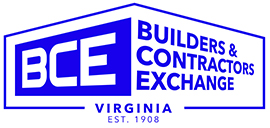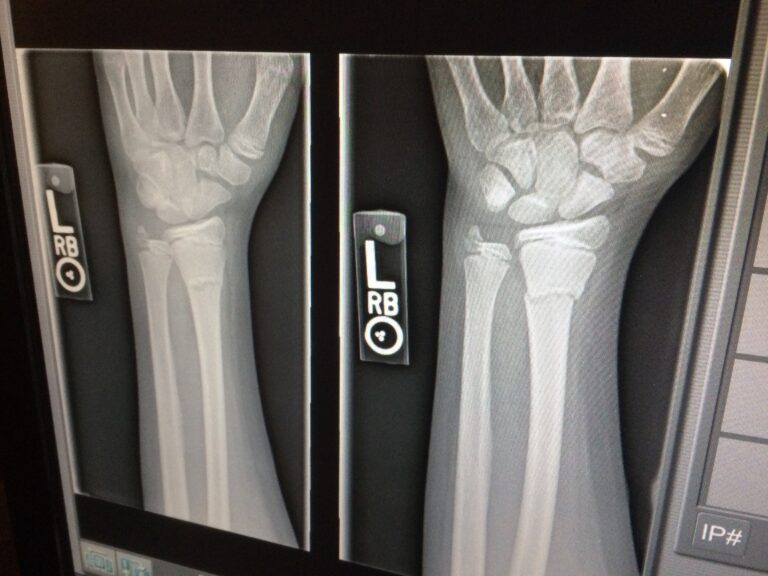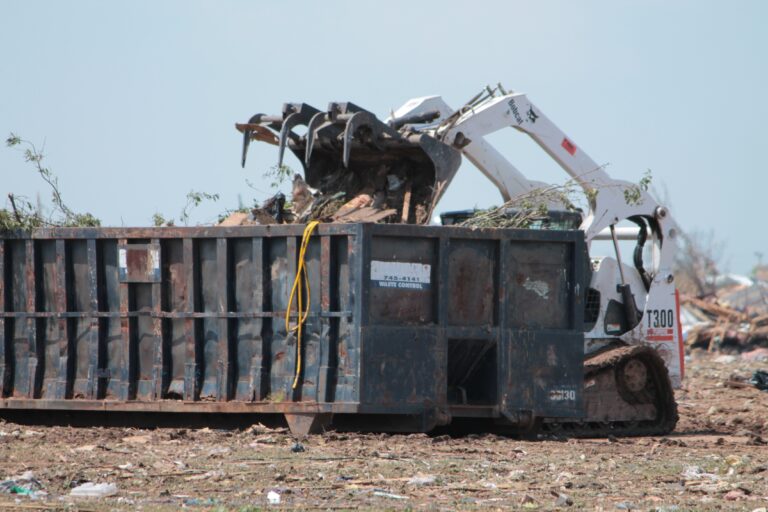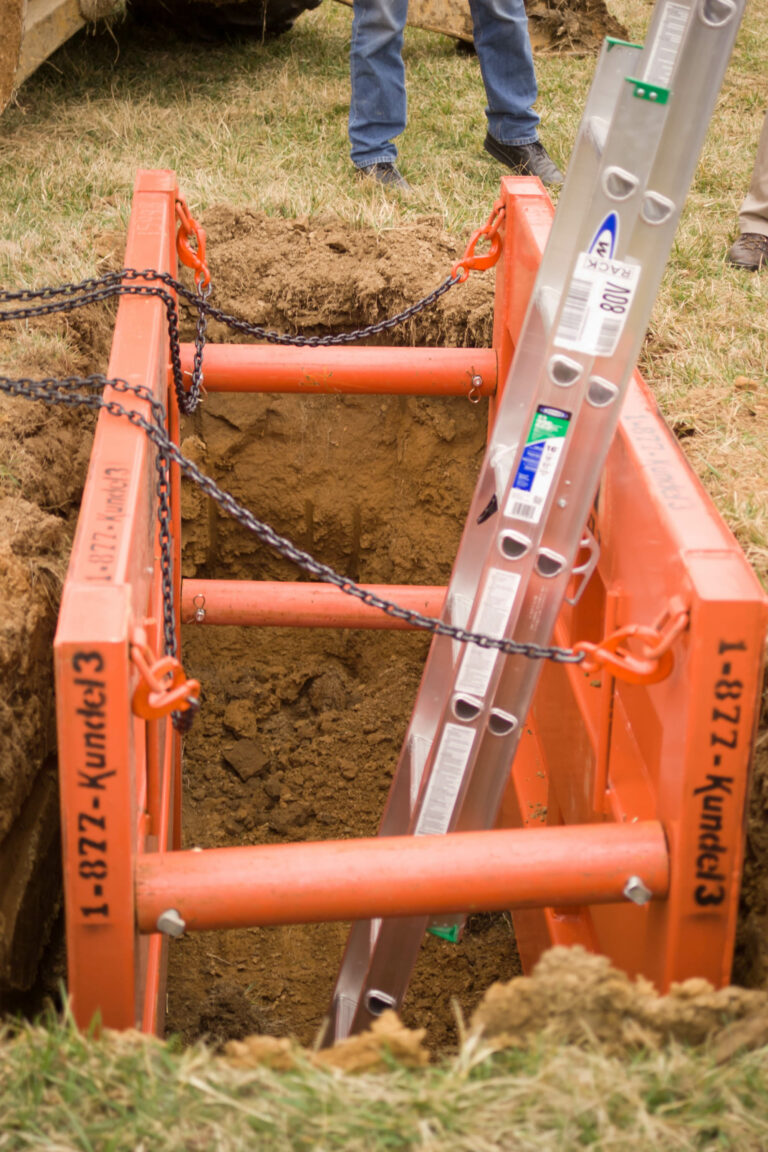Safety Tips – October 11, 2024
8 Stretches for Construction Workers to Lower Risk of Injury It’s no secret that construction work comes…
8 Stretches for Construction Workers to Lower Risk of Injury
It’s no secret that construction work comes with a risk of injury while on the job. In fact, injury rates in construction are 71% higher than the average injury rates across all industries. Injuries on the job can not only impact workers physically, it can take a toll on them financially if the injury causes them to miss work. What’s more, injuries can create serious delays in production.
One simple and cost effective way to minimize bodily injury before physically demanding construction work, is to stretch. Done correctly, stretching can improve circulation, flexibility, and improve your physical performance while on the job.
Stretching keeps muscles flexible, strong, and allows for your joints to maintain range of motion. Without it, your muscles and surrounding areas could become tight strained, or even permanently damaged during work.
Suggested 5 Minute Stretching Schedule
- Before Shift Warm Up
- Mid-Shift Break
- End of Shift Recovery
Simple Stretches That You Can Do On The Job
SIDE BEND
- Target Area: Torso and lower back
- Benefits: A side bend is a great warm up stretch to improve your range of motion along your torso and protect your lower back.
- How to Do It: Start with your feet shoulder width apart and your arms at your side. Start with raising your right arm overhead and lean. toward the left side. Repeat with your left arm overhead and lean toward the right side.
- Duration: Hold your stretch on each side for 3-5 seconds. Repeat twice.
NECK STRETCH
- Target Area: Neck and vertebrae
- Benefits: Neck stretches are designed to lengthen and relax the muscle and joints around your neck and vertebrae, which can lead to improved mobility and alignment.
- How to Do It: Begin with your head facing forward. Turn your head slowly to one side so that your chin is over your shoulder. Repeat this motion while slowly turning to the opposite side.
- Duration: Repeat the stretch 5 times on each side.
HAMSTRING STRETCH
- Target Area: Hamstring tendons, hips and pelvis
- Benefits: The hamstrings consist of three muscles that run down the back of your things. Routinely performing a hamstring stretch helps improve your ability to bend and extend the joints around your knees and thighs.
- How to Do It: Face forward and raise your foot on an elevated surface, at least a foot high. Slowly bend forward, stopping when you feel tension behind your thigh. Switch legs and repeat on the other side.
- Duration: Hold the stretch for 3-5 seconds. Switch legs and repeat the stretch on each side twice.
QUADRICEPS STRETCH
- Target Area: Quadricep muscles and knees
- Benefits: Holding this stretch can help loosen the muscles above the knee, increasing mobility, and preventing knee injury.
- How to Do It: Find a sturdy surface or wall that you can hold onto for balance. Grab your left ankle with your right hand, so that your leg is bending behind you at the knee. Switch to the right side.
- Duration: Hold this stretch for 3-5 sections, then repeat on each side of your body twice.
SHOULDER CIRCLES
- Target Area: Shoulders, triceps, and biceps
- Benefits: This simple stretch can help build muscle tone in your shoulders, triceps, and biceps to prevent injury.
- How to Do It: This stretch can be done pretty much anywhere. All you have to do is stand up straight, and slowly move your shoulders in a circular motion. Then move them upward, downward, and backward to make sure you’re loosening each area of your shoulders.
- Duration: Repeat these shoulder movements 5 times in each direction.
CHEST AND SHOULDER STRETCH
- Target Areas: Chest muscles and shoulders
- Benefits: A chest and shoulder stretch can help lengthen and loosen your chest muscles to improve range of motion in your upper body.
- How to Do It: Standing up straight, begin by bending both elbows at a 90 degree angle with fingertips facing upward. Squeeze your shoulder blades together and hold.
- Duration: Hold this stretch for 3-5 seconds and repeat five times.
WRIST STRETCH
- Target Area: Wrist
- Benefits: Stretching your wrist can improve flexibility around your hands and wrist to prevent injury while lifting objects.
- How to Do It: Place your forearms horizontally, with both palms facing the floor. Bend both wrists downward so that fingertips are pointing toward the floor. Then extend both of your wrists so your fingertips now face upward.
- Duration: Repeat this motion five times.
CALF STRETCH
- Target Areas: Gastrocnemius and the soleus muscles (calf muscles)
- Benefits: If you’re on a construction job, your calves are likely used daily by walking from place to place and participating in strenuous activities. A calf stretch can help prevent injury or aches around your calves, feet, and ankles.
- How to Do It: Stand close to a wall with one foot in front of the other. Keep your front knee slightly bent. Place both hands on the wall in front of you and with your back knee straight, and heel on the ground, lean forward toward the wall. You should feel tension along the back of your calf.
- Duration: Hold this stretch for 20-30 seconds, then repeat on the other side.
Tips for Successful Stretching
Now that you know which stretches to do to prevent injury on the job, it’s time to go over a few best practices to make sure you get the maximum benefits of each stretch. If you’re new to stretching, below are a few tips for success.
Breathe
Remember to breathe steadily while stretching. If you are depriving your muscles of oxygen this could cause lactic acid build up and pain. Studies also show that tension increases in your muscles when you inhale and reduces when you exhale. To keep your muscles loose and relaxed, it’s important to consistently exhale.
Go Slowly
Stretching your muscles slowly prevents them from overextending or being damaged. If you move too quickly, your muscles could be strained or seriously damaged.
Stretch Regularly
Creating a consistent stretching routine is an easy and cost effective way to improve flexibility, alleviate any tension or aching sensations, and reduce your risk of injury long-term.
Listen to Your Body
The most important rule of thumb when stretching is to listen to your body. If any stretch is causing pain or discomfort, discontinue the stretch or make modifications. When in doubt, check with your primary care provider to learn what works best for your body’s specific needs.
While construction equipment like lifts and cranes can alleviate the demand of strenuous activity on the job, there is still a high risk of injury for construction workers. Doing something as simple as incorporating stretches into your daily routine can help prime your body for work activity, improve flexibility and range of motion, and ultimately prevent injury while on the job.
8 estiramientos para que los trabajadores de la construcción reduzcan el riesgo de lesiones
No es ningún secreto que el trabajo de construcción conlleva un riesgo de lesiones en el trabajo. De hecho, las tasas de lesiones en la construcción son un 71% más altas que las tasas de lesiones promedio en todas las industrias. Las lesiones en el trabajo no solo pueden afectar a los trabajadores físicamente, sino que también pueden afectarlos financieramente si la lesión les hace faltar al trabajo. Además, las lesiones pueden crear serios retrasos en la producción.
Una forma simple y rentable de minimizar las lesiones corporales antes de un trabajo de construcción físicamente exigente es estirarse. Si se hace correctamente, el estiramiento puede mejorar la circulación, la flexibilidad y mejorar el rendimiento físico en el trabajo.
El estiramiento mantiene los músculos flexibles, fuertes y permite que las articulaciones mantengan el rango de movimiento. Sin él, los músculos y las áreas circundantes podrían tensarse, tensarse o incluso dañarse permanentemente durante el trabajo.
Horario sugerido de estiramiento de 5 minutos
- Calentamiento antes del turno
- Pausa a mitad de turno
- Recuperación de fin de turno
Estiramientos simples que puedes hacer en el trabajo
CURVA LATERAL
- Área objetivo: Torso y espalda baja
- Beneficios: Una flexión lateral es un gran estiramiento de calentamiento para mejorar su rango de movimiento a lo largo de su torso y proteger su espalda baja.
- Cómo hacerlo: Comience con los pies separados a la altura de los hombros y los brazos a los lados. Comience levantando el brazo derecho por encima de la cabeza e inclínese. hacia el lado izquierdo. Repita con el brazo izquierdo por encima de la cabeza e inclínese hacia el lado derecho.
- Duración: Mantenga el estiramiento de cada lado durante 3-5 segundos. Repita dos veces.
ESTIRAMIENTO DEL CUELLO
- Área objetivo: Cuello y vértebras
- Beneficios: Los estiramientos de cuello están diseñados para alargar y relajar el músculo y las articulaciones alrededor del cuello y las vértebras, lo que puede mejorar la movilidad y la alineación.
- Cómo hacerlo: Comienza con la cabeza mirando hacia adelante. Gira la cabeza lentamente hacia un lado para que la barbilla quede por encima del hombro. Repite este movimiento mientras giras lentamente hacia el lado opuesto.
- Duración: Repite el estiramiento 5 veces en cada lado.
ESTIRAMIENTO DE ISQUIOTIBIALES
- Área objetivo: tendones isquiotibiales, caderas y pelvis
- Beneficios: Los isquiotibiales consisten en tres músculos que recorren la parte posterior de tus cosas. Realizar rutinariamente un estiramiento de isquiotibiales ayuda a mejorar su capacidad para doblar y extender las articulaciones alrededor de las rodillas y los muslos.
- Cómo hacerlo: Mire hacia adelante y levante el pie sobre una superficie elevada, de al menos un pie de altura. Inclínese lentamente hacia adelante, deteniéndose cuando sienta tensión detrás del muslo. Cambia de pierna y repite en el otro lado.
- Duración: Mantenga el estiramiento durante 3-5 segundos. Cambia de pierna y repite el estiramiento en cada lado dos veces.
ESTIRAMIENTO DE CUÁDRICEPS
- Área objetivo: Músculos cuádriceps y rodillas
- Beneficios: Mantener este estiramiento puede ayudar a aflojar los músculos por encima de la rodilla, aumentar la movilidad y prevenir lesiones en la rodilla.
- Cómo hacerlo: Busca una superficie o pared resistente a la que puedas agarrarte para mantener el equilibrio. Agarra tu tobillo izquierdo con la mano derecha, de modo que tu pierna se doble detrás de ti a la altura de la rodilla. Cambia al lado derecho.
- Duración: Mantenga este estiramiento durante 3-5 secciones, luego repita en cada lado de su cuerpo dos veces.
CÍRCULOS DE HOMBROS
- Área objetivo: hombros, tríceps y bíceps
- Beneficios: Este simple estiramiento puede ayudar a aumentar el tono muscular en los hombros, tríceps y bíceps para prevenir lesiones.
- Cómo hacerlo: Este estiramiento se puede hacer prácticamente en cualquier lugar. Todo lo que tienes que hacer es pararte derecho y mover lentamente los hombros con un movimiento circular. Luego, muévelos hacia arriba, hacia abajo y hacia atrás para asegurarte de que estás aflojando cada área de tus hombros.
- Duración: Repita estos movimientos de hombro 5 veces en cada dirección.
ESTIRAMIENTO DE PECHO Y HOMBROS
- Áreas objetivo: Músculos del pecho y hombros
- Beneficios: Un estiramiento de pecho y hombros puede ayudar a alargar y aflojar los músculos del pecho para mejorar el rango de movimiento en la parte superior del cuerpo.
- Cómo hacerlo: De pie derecho, comience doblando ambos codos en un ángulo de 90 grados con las yemas de los dedos hacia arriba. Aprieta los omóplatos y sujétalos.
- Duración: Mantenga este estiramiento durante 3-5 segundos y repita cinco veces.
ESTIRAMIENTO DE LA MUÑECA
- Área objetivo: Muñeca
- Beneficios: Estirar la muñeca puede mejorar la flexibilidad alrededor de las manos y la muñeca para evitar lesiones al levantar objetos.
- Cómo hacerlo: Coloca los antebrazos horizontalmente, con ambas palmas hacia el suelo. Dobla ambas muñecas hacia abajo para que las yemas de los dedos apunten hacia el suelo. A continuación, extiende ambas muñecas de modo que las yemas de los dedos queden hacia arriba.
- Duración: Repite este movimiento cinco veces.
ESTIRAMIENTO DE LA PANTORRILLA
- Áreas objetivo: gastrocnemio y músculos sóleos (músculos de la pantorrilla)
- Beneficios: Si está en un trabajo de construcción, es probable que sus pantorrillas se usen a diario caminando de un lugar a otro y participando en actividades extenuantes. Un estiramiento de la pantorrilla puede ayudar a prevenir lesiones o dolores alrededor de las pantorrillas, los pies y los tobillos.
- Cómo hacerlo: Párate cerca de una pared con un pie delante del otro. Mantén la rodilla delantera ligeramente flexionada. Coloque ambas manos en la pared frente a usted y, con la rodilla recta y el talón en el suelo, inclínese hacia la pared. Debes sentir tensión a lo largo de la parte posterior de la pantorrilla.
- Duración: Mantenga este estiramiento durante 20-30 segundos, luego repita en el otro lado.
Consejos para un estiramiento exitoso
Ahora que sabe qué estiramientos hacer para prevenir lesiones en el trabajo, es hora de repasar algunas de las mejores prácticas para asegurarse de obtener los máximos beneficios de cada estiramiento. Si eres nuevo en el estiramiento, a continuación te damos algunos consejos para tener éxito.
Respirar
Recuerde respirar constantemente mientras se estira. Si está privando a sus músculos de oxígeno, esto podría causar acumulación de ácido láctico y dolor. Los estudios también muestran que la tensión aumenta en los músculos cuando inhalas y se reduce cuando exhalas. Para mantener los músculos sueltos y relajados, es importante exhalar constantemente.
Ve despacio
Estirar los músculos lentamente evita que se extiendan demasiado o se dañen. Si te mueves demasiado rápido, tus músculos podrían sufrir tensiones o daños graves.
Estírate con regularidad
Crear una rutina de estiramiento constante es una forma fácil y rentable de mejorar la flexibilidad, aliviar cualquier tensión o sensación de dolor y reducir el riesgo de lesiones a largo plazo.
Escucha a tu cuerpo
La regla general más importante al estirar es escuchar a tu cuerpo. Si algún estiramiento le causa dolor o molestias, suspenda el estiramiento o haga modificaciones. En caso de duda, consulte con su proveedor de atención primaria para saber qué funciona mejor para las necesidades específicas de su cuerpo.
Si bien los equipos de construcción, como elevadores y grúas, pueden aliviar la demanda de actividades extenuantes en el trabajo, todavía existe un alto riesgo de lesiones para los trabajadores de la construcción. Hacer algo tan simple como incorporar estiramientos en su rutina diaria puede ayudar a preparar su cuerpo para la actividad laboral, mejorar la flexibilidad y el rango de movimiento y, en última instancia, prevenir lesiones en el trabajo.







